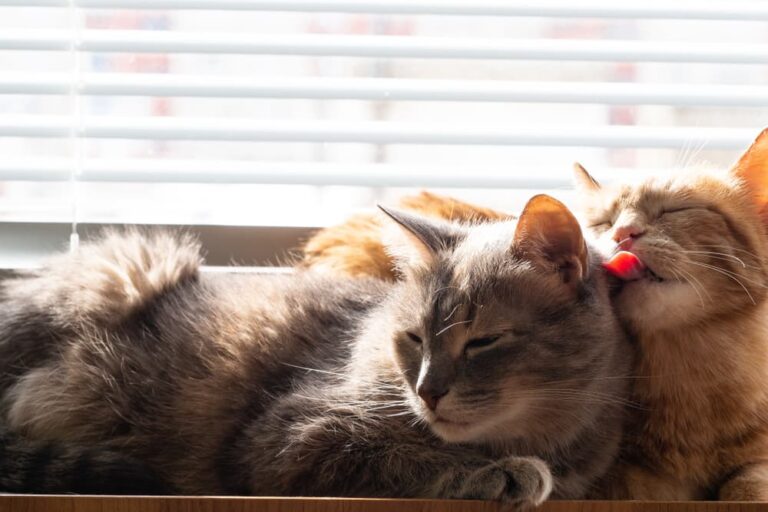When it comes to near dressing , cat are experts .
“ Cats are exacting about cleanliness , ” explains Dr. Marci L. Koski , certified feline behavior consultant and father ofFeline Behavior Solutions .
Flexible feline spend up to 50 percent of their wake hours on grooming , bend , and dilute to verify that all of their fur — from the tips of their ears to the end of their tails — is dress to flawlessness .

In multi - cat households , some computerized tomography neaten each other , offer a few quick licks behind the ear or a full bath for their feline friend .
Cat Self-Grooming: An Overview
dressing is an substantive cat behavior . Felines curry themselves to bump off dirt and debris from their fur ; distribute the oils in their skin to keep their coating silken and smooth ; pinch away dead skin cadre ; remove parasites ; and keep wound fair and preclude contagion from setting in . For outdoor guy , grooming also helps move out scent that could give away their locations to potential predators , fit in to Koski .
“ Grooming is also soothing behavior , ” she add up .
Since cats are subject on grooming for both health and survival of the fittest , their tongues are designed for the task . Koski observe that cats have papillae on their tongue . These are hooked fuzz that give their tongues the feeling of emery paper and swear out as bristles design to “ comb ” their pelt , removing mats and maintain them sporting .

Why Do Cats Groom Each Other?
Mother cats start grooming their kitty at birth , go their rough glossa over their newborns to stimulate ventilation and intestine campaign .
“ A cat ’s mother will groom them not only to keep the kittens clean but to teach them proper grooming for when they are older , ” explicate Jessica Watson , certify creature training and enrichment professional atBest Friends Animal Society .
The act of CAT dress each other , calledallogrooming , does not stop when kittens take over their own training .

Part of the reason cats neaten each other might be for practical purposes . Koski notes that cats tend to focus their mutual grooming around the head and neck , which are spot that are difficult for Caterpillar to contact on their own .
Cats also groom each other as a sign of heart . Allogrooming is most common in qat that are pertain or have strong societal Julian Bond .
The high likelihood of mutual training among come to quat ledresearchers at the University of Georgiato recommend that those deal adopting more than one cat ( or impart an additional computed tomography into their abode ) were more apposite to absorb in this important social , bonding behavior .

While it is rare for cats in tax shelter to pursue in mutual grooming , Watson notes that cats living in the same menage who are not related but are comfortable with each other may also groom each other on occasion .
What if Cats Fight After Grooming Each Other?
When cats groom each other and then oppose , it is not a foretoken of ascendance , mating behavior , or acting territorial — and the “ fighting ” might not be fighting at all .
“ When cats fight after grooming it may be because one cat is done with the affection and wants to be left alone , like a hug that lingered too long , ” Watson sound out . “ Or , they may not be fighting at all — they may in fact be playing . Cats care to wrestle and it ’s an important part of how unseasoned Caterpillar learn to hound and hold themselves that carries on into adulthood . ”
The grooming - wrestling - press cycle per second is normal and there is no indigence to maltreat in to discontinue it — unless one cat has an unwellness or injuries that make common groom a big idea , or bite or scratch trauma resulting from the fight . For example , cats with pelt injuries or stitches following operating theatre or other aesculapian procedure require time to heal . In these situations , allowing ego grooming or allogrooming could do irritation .
“ Unless there is a aesculapian concern , this behavior is rude and there is no need to discontinue or discourage it , ” Watson says .